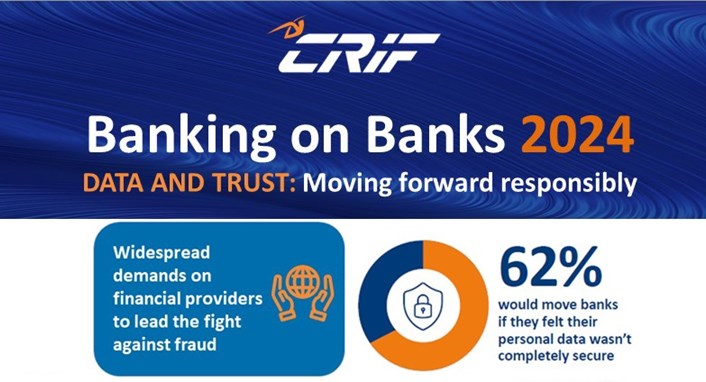
Banking on Banks 2024: Data and Trust infographic

We started our Banking on Banks series back in 2022, when Europe, and much of the rest of the world, was emerging from the pandemic and into what was, for many, a rising cost of living.
In 2023 we looked at how these crises had shifted what people expected from their financial providers, and how they had irreversibly shifted the way they interacted with them.
Since then, we have been keeping a finger firmly on the financial pulse, surveying consumers across Europe - and now the US - to continue exploring how they are engaging with their banks and financial providers.
Inflation is beginning to drop in the UK, the US, and a number of economies in the European Union (EU). We are seeing encouraging green shoots of recovery, but the increased cost of living lingers on for many consumers. People are still struggling.
Research from Fair4All Finance in July 2024 revealed that some 20.3 million people in the UK – or 44% of the adult population – are now in financially vulnerable circumstances.1 In the US, meanwhile, major banks have warned that lower-income customers are showing increased signs of financial stress as the country prepares for the upcoming presidential election.
Against this backdrop, innovations in banking and insurance are making it possible for more people to access financial services, including loans, credit cards, and appropriate insurance cover, as well as transforming the way people interact with these services.2
Advances in data and analytics have given financial institutions the ability to examine vast amounts of data from across an individual’s finances, making it easier for lenders and insurance providers to make more informed and accurate decisions about the services and products they offer. Alongside this, consumers can now access more personalized services and offers than they were previously able to.
However, our latest research shows that, despite these innovations, challenges remain. Many people are still skeptical about opening up more of their financial information to their bank, lender, or insurance providers. Overall, concerns around trust and security are stopping consumers from accessing the full benefits of the latest innovations in the financial sector.
Consumers are worried about being defrauded, with scams like authorized push payment (APP) on the rise, as increasingly sophisticated fraudsters target new technology with their attacks. People expect their banks to keep them – and their valuable data – safe. It’s a prerequisite for a successful relationship.
This picture is complicated further by notable divides across generations and geographies. Younger adults are overall more willing to share their financial information when compared to older generations, whilst consumers in the US are more open to sharing information than their European counterparts.
These insights give banks and insurance companies plenty of challenges to overcome. They need to become more agile and responsive, engaging with their customer base more deeply to ensure they are catering to the demands of different demographics.
In our latest Banking on Banks report – the second in 2024 and focused on the issue of data and trust – we aim to provide financial institutions throughout Europe and the US with insights into how they can leverage new technology and customer data to better meet consumer needs, whilst improving levels of trust amongst existing and prospective customers.


